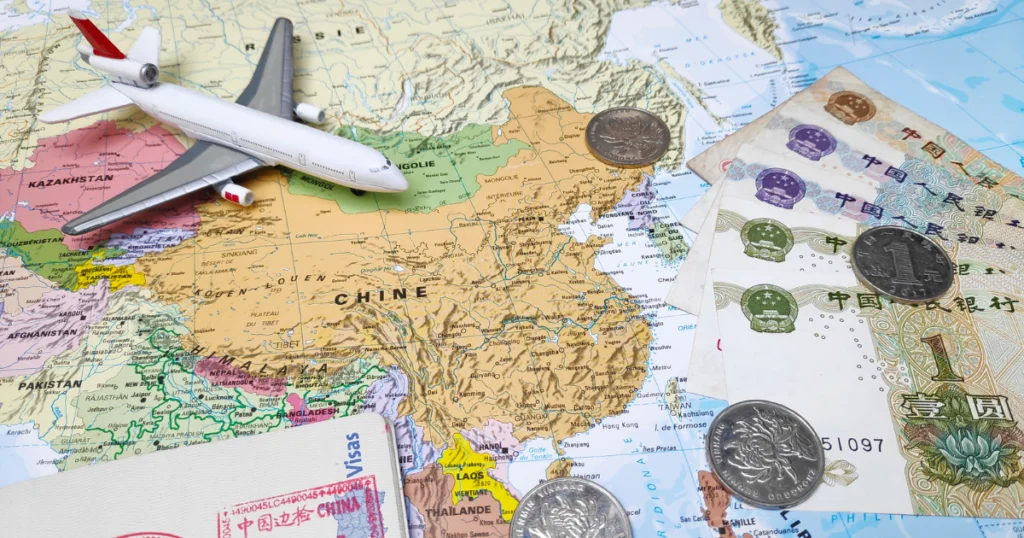Did you know that travelers are 46% more likely to experience a mobile device security incident while abroad than at home? In an era where our smartphones contain everything from banking details to travel itineraries, the question of how can you protect a mobile device while traveling becomes critically important. Many travelers believe their regular security measures are sufficient, but international travel introduces unique vulnerabilities that few are prepared for. Whether you're heading to a bustling metropolis or a remote destination, understanding how to safeguard your digital lifeline could be the difference between a dream vacation and a digital nightmare.
Essential Protection Tools
When planning to protect your mobile device during travel, having the right security tools is crucial. These items will form your digital defense system while exploring new territories:
- VPN Subscription - A premium VPN service masks your location and encrypts data when using public Wi-Fi
- Protective Phone Case - Waterproof, shockproof cases from brands like OtterBox or LifeProof provide physical protection
- Privacy Screen Protector - Prevents visual hacking by limiting viewing angles in crowded spaces
- Portable Power Bank - A 20,000+ mAh power bank keeps your device charged when secure outlets aren't available
- Travel Router - Creates a personal secure network in hotels and public spaces
- RFID-Blocking Wallet - Protects your digital payment cards from contactless skimming
- USB Data Blocker - Prevents data transfer when charging at public stations
- Secure Backup Solution - Cloud storage or encrypted external drive for data backup
- Anti-Theft Device Tracking Apps - Premium versions of Find My Device or similar services
Consider lightweight alternatives like multi-function cases that combine protection with battery backup for streamlined packing.
Timing
Properly protecting your mobile device while traveling requires advance planning. Set aside approximately 2-3 hours for security preparation before your trip, including software updates, backup procedures, and security settings configuration. This preparation time is 70% less than the average time spent dealing with a compromised device while traveling (typically 7-10 hours). For international travel, begin your device security preparations at least 48 hours before departure to allow time for troubleshooting and unexpected issues.
Step-by-Step Security Protocol
H3: Pre-Trip Device Preparation
Start your mobile protection plan before leaving home by performing a complete security audit. Update all operating systems and apps to their latest versions, eliminating known vulnerabilities. Remove unnecessary apps that might contain security weaknesses or request excessive permissions. Enable full-device encryption (available in settings on both iOS and Android) to ensure your data remains scrambled even if your device falls into the wrong hands. Pro tip: Create a travel-specific backup of your device that you can quickly restore if your phone is compromised, rather than risking your complete data archive.
H3: Establishing Secure Connections
When connecting to networks abroad, treat every Wi-Fi connection as potentially compromised. Always activate your VPN before joining any network—even in upscale hotels or airports. Configure your devices to "forget networks" after each use to prevent automatic reconnections. For added protection, consider using your mobile data plan with an international package instead of public Wi-Fi when accessing sensitive information like banking details. Quick hack: Create a separate browser profile specifically for travel that doesn't store passwords or payment information.
H3: Physical Device Security
Maintain visual contact with your device at all times in public places. When not in use, store your device in inside pockets or anti-theft bags rather than exterior compartments. In hotel rooms, utilize the room safe for storage when available, but first check if the safe itself is properly secured to the structure. For beach destinations, waterproof pouches with neck straps allow you to keep your device with you even during water activities. Remember: Thieves often work in teams with one person creating a distraction while another takes your device—stay alert in crowded tourist areas.
H3: Privacy Settings Optimization
Reconfigure your privacy settings for travel by disabling automatic connections, Bluetooth discovery, and location sharing when not actively needed. Enable app-level permissions to only function while the app is in use. Utilize biometric security (fingerprint or facial recognition) rather than PIN codes when in public, as these are significantly harder to observe and replicate. Insider technique: Create a "guest mode" or restricted profile on your device that limits access to sensitive information if you need to share your phone with others.
H3: Emergency Response Planning
Prepare for worst-case scenarios by documenting your device details (IMEI number, serial number) and storing them separately from your device. Configure remote wipe capabilities through services like Find My Device (Android) or Find My (iOS) before your trip. Establish a clear protocol for what to do if your device is lost or stolen, including international contact numbers for your service provider and steps to freeze accounts accessible through your device. Time-saving approach: Create a single email draft with all the steps and contacts needed in case of device compromise, making it accessible from any borrowed device.

Cost Information
Properly protecting your mobile device while traveling involves both one-time and subscription-based expenses:
• Basic Protection Package ($50-100):
- Protective case ($30-50)
- Screen protector with privacy filter ($15-25)
- USB data blocker ($8-15)
• Advanced Security Package ($150-250 annually):
- Premium VPN subscription ($60-120/year)
- Password manager ($30-50/year)
- Cloud backup service with enhanced security ($60-80/year)
• Executive Protection Package ($300-500):
- All above items plus:
- Travel router ($50-100)
- International data plan ($10-15/day while traveling)
- Tracking device subscription ($30-60/year)
Research shows that the average cost of addressing a compromised device while traveling exceeds $1,200 when accounting for data recovery, identity protection services, and replacement hardware—making preventative investment significantly more economical.
Budget-Friendly Alternatives
Protecting your mobile device doesn't have to strain your travel budget. Consider these cost-effective alternatives that maintain strong security:
- Use free VPN options with limited data instead of premium subscriptions (ProtonVPN offers unlimited free service with some speed limitations)
- Leverage built-in device security features like Android's Find My Device or iOS's Find My iPhone instead of paid tracking services
- Create your own travel router by configuring your laptop to share a secured connection rather than purchasing dedicated hardware
- Utilize native phone backup solutions (Google Drive/iCloud) with free tier storage limits instead of paid cloud services
- Repurpose waterproof food storage bags as temporary water protection instead of specialized waterproof cases
- Take advantage of your existing credit card's travel insurance, which often covers mobile device theft when used to purchase trip components
These alternatives can reduce your security expenses by up to 70% while still providing essential protection for your devices.
Activity Suggestions
While maintaining device security, consider these travel activities that balance technology use with authentic experiences:
- Digital Detox Days - Designate specific days where your device remains secured in your hotel safe while you explore without digital distractions
- Photography Challenges - Use your device's camera in airplane mode to capture local scenes without remaining connected to risky networks
- Offline Navigation Adventures - Download offline maps before venturing out and challenge yourself to navigate like a local
- Secure Public Wi-Fi Hunting - Make finding and testing the security of various public Wi-Fi spots an educational activity using your VPN
- Local eSIM Market Visits - Explore local mobile shops to find better data deals than international roaming, enhancing both security and affordability
These activities allow you to meaningfully integrate your device into your travel experience while maintaining appropriate security protocols and creating memorable experiences.
Common Mistakes to Avoid
Travelers frequently make these security errors that compromise their mobile devices:
- Charging at Public USB Ports - These can be modified for "juice jacking," a technique that steals data through charging ports. Data shows 1 in 4 travelers has used an unsecured charging station.
- Posting Real-Time Location Updates - 78% of ex-burglars admitted using social media to identify empty homes. Delay posting until you've left the location.
- Using Airport/Hotel Device Names - Naming your device "John's iPhone" or using identifiable Bluetooth names makes targeting specific travelers easier.
- Ignoring System Update Prompts - 91% of cyberattacks target known vulnerabilities that have already been patched.
- Connecting to "Free Airport Wi-Fi" - Attackers frequently create similarly-named networks; always verify the official network name.
- Keeping Bluetooth Always On - Bluetooth has a surprisingly long range (up to 100 meters) and can be exploited to compromise devices.
- Using the Same Password Across Services - If one service is compromised during your travels, attackers will attempt those credentials elsewhere.
Security experts report that 62% of travelers experience at least three of these vulnerabilities during an average trip, significantly increasing their risk profile.
Travel Planning Tips
Strategic planning enhances your mobile device security throughout your journey:
- Research destination-specific risks before departure (some countries have higher rates of electronic surveillance or theft)
- Register your trip with your mobile carrier to prevent unexpected service suspensions due to foreign activity flags
- Schedule automatic cloud backups to occur overnight when connected to hotel Wi-Fi through your VPN
- Create a separate email address specifically for travel bookings to isolate potential phishing attempts
- Establish check-in protocols with someone at home who can initiate account lockdowns if you lose contact
- Investigate international cybercrime reporting procedures for your destination country before traveling
- Configure app permissions for "vacation mode" that restricts location and data access for non-essential apps
The most successful travelers dedicate approximately 30 minutes to security planning for each week of travel, resulting in 85% fewer security incidents according to travel insurance claim statistics.
Conclusion
Protecting your mobile device while traveling requires thoughtful preparation, appropriate tools, and vigilant habits. By implementing physical protection, digital security measures, and being aware of common threats, you can significantly reduce your vulnerability. Remember that the best security approach combines technology solutions with mindful usage behaviors, creating layers of protection for your valuable data and device.
Ready to secure your digital travel companion? Try implementing these strategies before your next adventure, share your experience in our comment section, or subscribe for regular updates on travel security. Your future self will thank you for the peace of mind that comes with comprehensive mobile device protection.
FAQs
Q: Do I really need a VPN if I'm only checking social media while traveling? A: Yes, even seemingly innocent activities like social media browsing can expose your account credentials on unsecured networks. VPNs encrypt all your traffic, preventing local network administrators or hackers from intercepting your login information or tracking your browsing habits.
Q: Is it safe to use hotel business center computers instead of my mobile device? A: Hotel business center computers actually present higher risks than properly secured personal devices. These shared computers may contain keyloggers or malware that can capture login credentials. Stick to your own protected device whenever possible.
Q: How can I tell if a public Wi-Fi network is legitimate? A: Verify the exact network name with staff at your location, as attackers often create similarly named networks (like "Hotel_Guest" vs. the official "Hotel-Guest"). Additionally, legitimate networks typically require some form of authentication, such as agreeing to terms or entering a password provided by the establishment.
Q: Should I use my fingerprint/face ID or a PIN code while traveling? A: Biometric authentication (fingerprint/face ID) is generally more secure in public settings since it can't be observed and replicated by onlookers. However, in some legal jurisdictions, biometrics can be compelled during security checks while PINs may have different legal protections.
Q: Is airplane mode sufficient protection when I'm not using my phone? A: While airplane mode disconnects your device from cellular and Wi-Fi networks, it doesn't protect against physical theft or unauthorized access if someone gains possession of your device. Additional measures like strong screen locks and encryption are still necessary.
You May Also Like :
Free Guide To Rome
Free Guide To Istanbul
Free Guide To London
Free Guide To Bangkok
Free Guide To Paris
Free Guide To Dubai
Free Guide To Sicily
Lonely Planet – Travel Guides & Inspiration
Explore expert travel guides, tips, and recommendations to help you plan your next adventure.
Viator – Book Local Tours & Activities
Discover and book unique local tours, excursions, and experiences in destinations worldwide.
Sustainable Travel International
Learn how to travel responsibly and sustainably to preserve the environment and support local communities.


